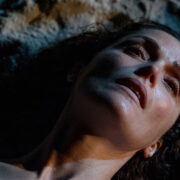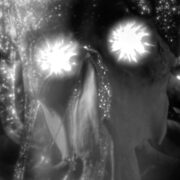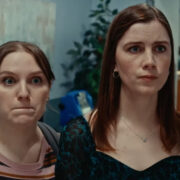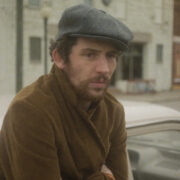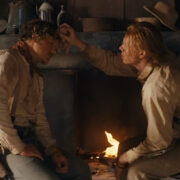NYFF63: Queen Kelly
Lee Jutton has directed short films starring a killer toaster,…
Notorious for shooting far too much footage with far too much attention to detail, and thus going far over budget, Erich von Stroheim – probably best known to modern movie audiences for his Oscar-nominated turn as Norma Desmond’s director-turned-chauffeur in Sunset Boulevard – was one of the most idiosyncratic auteurs of early Hollywood. Yet despite his undeniable ability as a visual storyteller, von Stroheim directed only nine features, and today, many of them are either lost altogether or exist only in truncated forms. Throughout his career, producers fired von Stroheim to give his projects to other directors (Merry-Go-Round), butchered his footage in the edit (Greed), or scrapped his films midway through production.
The latter was the unfortunate fate of Queen Kelly. Produced by and starring von Stroheim’s future Sunset Boulevard co-star, Gloria Swanson, Queen Kelly was supposed to be an elaborate romantic epic spanning multiple continents, in which Swanson’s titular convent girl would be romanced by a dashing prince, attacked by a mad queen, and shipped off to German East Africa to be married to the grotesque owner of a raucous brothel, where she becomes the madam. But by the time von Stroheim began to shoot the African portions of the film, Swanson – disturbed by how much money was being spent and how scandalous the resulting footage was – decided to shut down production so that she and her lover and co-producer, Joseph P. Kennedy, wouldn’t go bankrupt making a movie that wouldn’t make it past the censors.
Restorations and Reimaginings
Eventually, to cut her losses, Swanson hired another director to shoot a slapdash ending to tack on to von Stroheim’s footage so that the film could be shown in a few European countries in the early 1930s; when footage from Queen Kelly appeared in Sunset Boulevard in 1950, it was the first time American audiences had seen anything from the film. In 1985, Kino International pieced together a new “restoration” of Queen Kelly in two versions: one that used production stills to try to approximate what von Stroheim’s finished film might have looked like (culminating in a brothel brawl and a happy ending for Kelly), and another with Swanson’s ending (in which Kelly, in an untidy and unlikely bit of resolution for such a spunky and spirited character, commits suicide).
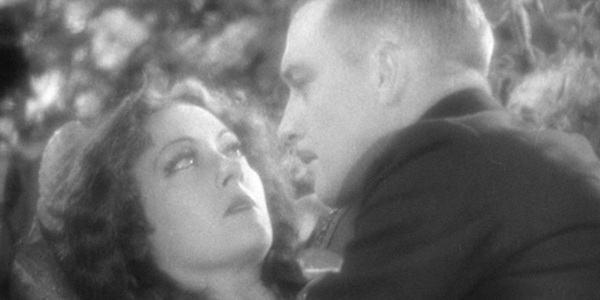
Now, forty years later, Milestone Films has produced a new reconstruction of Queen Kelly using the original nitrate 35mm materials (gorgeously restored in 4K), von Stroheim’s script, new research, and recently discovered materials. And despite an ending that is admittedly anticlimactic – something unfortunately unavoidable because of the way it had to be cobbled together – this reimagining is the closest we will ever get to a complete Queen Kelly, and that makes it a must-see. Indeed, I’m convinced that, if completed as von Stroheim intended, Queen Kelly would have been the finest of his fractured fairy tales: films that stripped away the glamour of the European nobility to reveal the sordidness lurking underneath. (As von Stroheim himself put it, “Lubitsch shows you first the king on the throne, then as he is in the bedroom. I show you the king in the bedroom so you’ll know just what he is when you see him on his throne.”)
Fire and Flowers
Queen Kelly is set in the imaginary European kingdom of Cobourg-Nassau, ruled over by the mad queen Regina V (Seena Owen). Regina is betrothed to the handsome Prince Wolfram (Walter Byron), known as “Wild Wolfram” for his drunken all-night antics with other women. When Regina punishes Wolfram by sending him out to conduct maneuvers in the hot sun, he encounters a group of convent girls out for a walk, one of whom is the fiery Irish orphan Patricia Kelly (Swanson). After a saucy exchange that involves Kelly throwing her underpants in the face of the prince (a shocking scene that is pure von Stroheim, and should have been a warning to Swanson of the perversity to come), Wolfram becomes obsessed with seeing her again, so much so that he sneaks into the convent at night and sets it on fire so that he can abduct Kelly amidst the chaos.
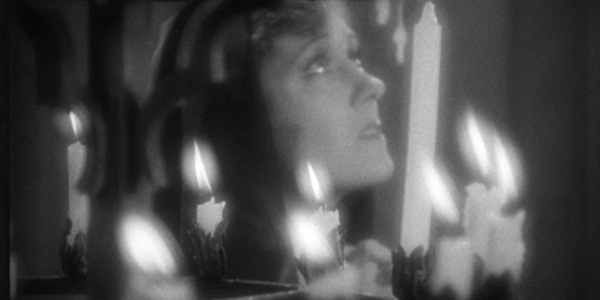
Wolfram treats Kelly to a romantic evening of orchids and oysters that is interrupted by Queen Regina, who – in one of silent cinema’s most deliciously kinky scenes – chases Kelly, clad only in her nightgown, from the palace by viciously whipping her. Wolfram is imprisoned, while Kelly is shipped off to Dar es Salaam, where her brothel-owning aunt is dying. On her deathbed, Kelly’s aunt begs her to marry her benefactor, a repulsive man named Jan Vryheid (Tully Marshall, von Stroheim’s go-to actor for anything unsavory). Kelly grants her wish, but refuses to consummate the marriage, telling Jan she’ll do literally anything else but let him touch her. So, he puts her in charge of the brothel, where her haughty and regal manner earns her the sobriquet Queen Kelly: a bit of painful irony considering the future she could have had with Prince Wolfram.
Marble and Madness
Von Stroheim’s vision of Cobourg-Nassau is downright decadent, from the black and white checkered marble of the palace floors to the tables teeming with food and flowers to the magnificent staircase that Regina chases Kelly down with her whip. Indeed, Owen’s crazy-eyed Queen Regina V is the scene-stealer of the film, slinking around her elaborately decorated palace in various states of undress and covering up her nudity by clutching a fluffy white cat to her chest. (A sequence in which shots of Regina attacking Wolfram are juxtaposed against those of her cat snarling at his Dachshunds is a perfect encapsulation of those characters.) In contrast, Byron’s Wolfram essentially exists to be an object of romantic desire, with little to flesh out his character beyond his elaborate military uniform laden with medals (a quintessential von Stroheim touch).
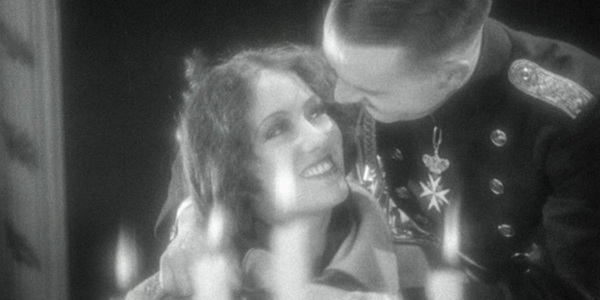
But Swanson’s Kelly is a delight; the 30-year-old actress was too old to be truly believable as a youthful convent girl, but her charming and energetic performance almost convinces you otherwise. And, as photographed by a crew of cinematographers that included Paul Ivano and William H. Daniels (Garbo’s personal favorite), Swanson never looked more beautiful than she does here; even in black and white, you can appreciate her bright blue eyes and the sea of emotions contained within. There is a sequence in the convent in which Kelly prays before an altar, her face framed by dripping candle wax and lit by flickering flames, that I am convinced contains the most gorgeous shots ever committed to celluloid.
Von Stroheim uses light and shadow to create an incredible atmosphere that is further accentuated by the way the film’s production design contrasts stark white with pitch black, never more so than when Kelly trades her virginal white convent togs for the elaborate black garb of the jaded brothel madam: a costume that we unfortunately only ever get to see in stills. It’s also a shame we don’t get more of Marshall’s sleazy, slobbering Jan Vryheid and his two henchwomen, cook Kali Sana (pioneering Black actress Madame Sul-Te-Wan), and tattooed, tubercular sex worker Coughdrops (Rae Daggett); these unsavory characters serve as the personification of the squalid surroundings that Kelly finds herself in, and while their acting might be a bit over the top, it’s still a lot of fun to watch them plotting together. They’re also pretty boundary-pushing, and not just because their dialogue is laden with innuendo; after all, how many other films made in 1929 would show you an interracial trio drinking from the same bottle?
Conclusion
The existing Queen Kelly footage – about one hour and forty minutes – ends with Kelly’s devastating marriage to Jan, during which she has a hazy hallucination of Wolfram telling her to wait for him and not lose hope that von Stroheim renders masterfully through the use of dissolves. If von Stroheim’s script had been shot in its entirety, the completed film could have been upwards of five hours long; instead, we get a five-minute wrap-up of the story that leaves much to be desired, especially since this rapid-fire denouement contrasts so sharply with the leisurely pace of the rest of the film. Watching it fills me with sadness for what we lost when Swanson suddenly stopped production; nonetheless, some Queen Kelly is better than no Queen Kelly, especially when Milestone Films has devoted such meticulous effort to restoring it.
Queen Kelly is screening as part of the Revivals section at the 63rd New York Film Festival, which runs from September 26 to October 13, 2025.
Does content like this matter to you?
Become a Member and support film journalism. Unlock access to all of Film Inquiry`s great articles. Join a community of like-minded readers who are passionate about cinema - get access to our private members Network, give back to independent filmmakers, and more.
Lee Jutton has directed short films starring a killer toaster, a killer Christmas tree, and a not-killer leopard. Her writing has appeared in publications such as Film School Rejects, Bitch: A Feminist Response to Pop Culture, Bitch Flicks, TV Fanatic, and Just Press Play. In addition to movies, she's also a big fan of soccer, BTS, and her two cats.


